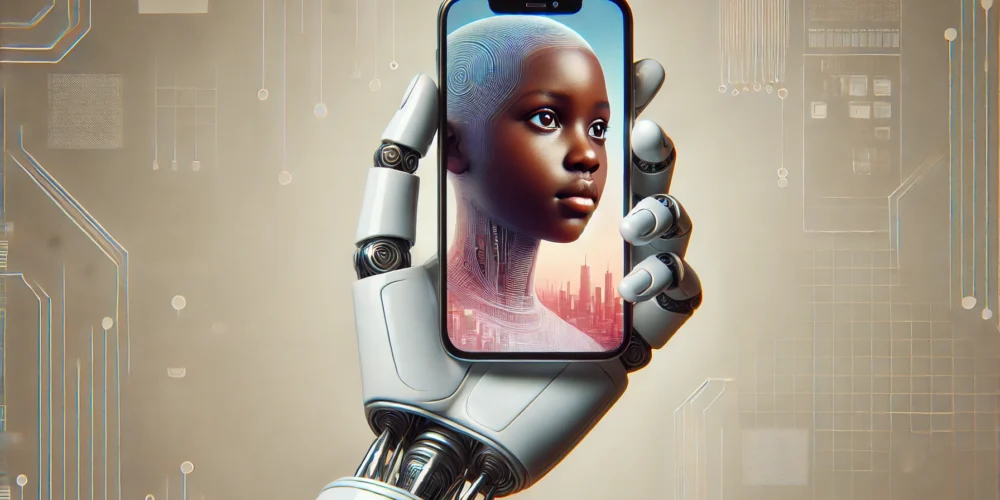How four computing waves created Gen Z

I have lived through not one, but four huge waves in computing technology, from the time that I came of age in the 1980s, to the current epoch. Let me relive the journey this Sunday.
When I arrived at university, a computer was something you went into a special room to work with. You never really saw the thing itself, but just sat at a terminal with a hypnotic, flickering green screen in front of you. And you had to know the computer’s language in order to talk to it. By the time I left, the personal computer was becoming mainstream, finding its way into homes, schools, and small businesses.
It felt like we had been handed the keys to a mysterious kingdom of possibilities. Certainly my early work with word processors, spreadsheets and presentation software felt magical. But still, the new technology was very expensive and very cumbersome to use. The software was rudimentary; the memory capacity tiny; the graphics laughable.
Then came the laptop, and the computer became mobile. In my first job, the company bought a bunch of laptops to be shared by the staff; by the time I met my second employer, a personal laptop was the minimum requirement for a knowledge worker. We became road warriors, productive on the go.
But you could still only work on what was stored on your computer. Then the second wave, the tsunami that was the internet, hit the beaches. The ocean of information was now boundless, and millions, and eventually billions, were connected across the globe. The world was suddenly smaller, more accessible, so much more exciting for young minds. Email displaced postal mail, everyone had a website, e-commerce became a thing. You could research anything, talk to anyone, anywhere. The world began feeling borderless.
Not quite, though. Computers were still pretty pricey; internet speeds were frustratingly low and decent bandwidth very expensive. So only the privileged had real access to the web and could use it routinely.
Enter wave three. The mobile phone, once just used for calls and rudimentary communication, morphed into something far more revolutionary. Apple introduced the first proper touchscreen phone and mobile operating system in 2007; Google followed with Android; app stores appeared to allow us to do more and more with our devices, and—bang. The world was now at our fingertips and in our pockets, literally. Two parallel waves also landed: cloud computing; and much better connectivity. We all moved around with what were once regarded as supercomputers in our palms. We carried our cameras, our music collections, our bank accounts, our payment methods on one super-powered, super-connected device.
Apps became the new currency of connectivity and productivity. Social media took the place of social life. We were no longer tethered to our desks; we no longer had to live in our cities and countries alone. We could communicate, work, and be entertained wherever we were.
Today, we are into year two of the fourth wave: artificial intelligence. AI has been a long time coming, but with its new generative versions becoming widely available, it’s finally popped. This could be the most disruptive wave yet. It could make us, or break us. Machines are now learning, adapting, and even surpassing human capabilities. The likes of ChatGPT, Claude, and Gemini are becoming more and more freely available.
AI is a massive productivity enhancer for all of us, but it also poses serious dangers. I will expound more on what is real and what is hype right here, next week. But let me finish today with some thoughts about Generation Z, the population cohort of the moment.
Those of my generation attempting to understand Gen Z are people of my first two epochs, the PC and the internet. They are applying old-world lenses to a new-world phenomenon. Understand this: these are the children of waves three and four, the first digital natives. They use their smartphones in ways older folks cannot even fathom. They are always connected, always chatting, always discovering. Now, they have taken naturally to AI; it is on their devices all the time. They use those devices, and the new AI tools, for learning, entrepreneurship, and activism. This is a generation that can innovate and influence without leaving home.
If you think you can ignore this generation, bend it to your preferences, or suppress it—enter the brace position, because you have severe turbulence coming. They were born into a world where information flows freely, news spreads like wildfire, barriers are constantly dismantled, and new approaches to old issues are intuitive. They challenge and question instinctively. They have grown up fearless and not wedded to the protocols and etiquettes of yesteryear. Their collective voice will mobilize movements, challenge injustices, and call out BS with a tap and a hashtag.
You want to address and manage Gen Z, in your nation or your workplace? You can’t do it by being insincere or inauthentic. You can’t do it with fru-fru and slogans. You can’t talk down to them. Dialogue must be two-way. Purpose must drive action. Promises must be kept.
Thank me later.
(Sunday Nation, 28 July 2024)

Buy Sunny Bindra's new book
The X in CX
here »
Popular Posts
- You are who you hang out withSeptember 28, 2025
- Why your mother was right about your anxietyOctober 12, 2025
- The balance sheet that mattersOctober 5, 2025
- Use AI, but don’t lose youOctober 19, 2025
- Born knowing the waySeptember 21, 2025















